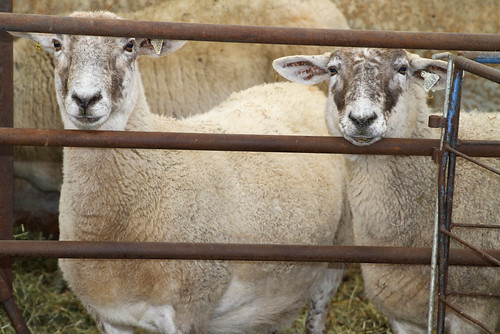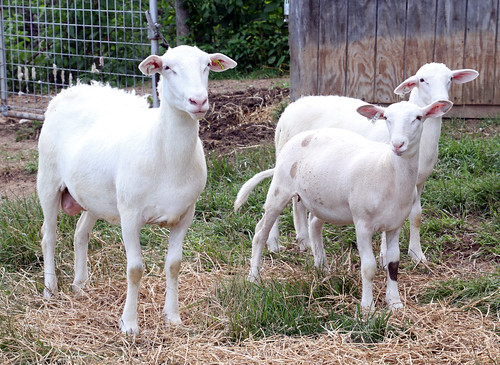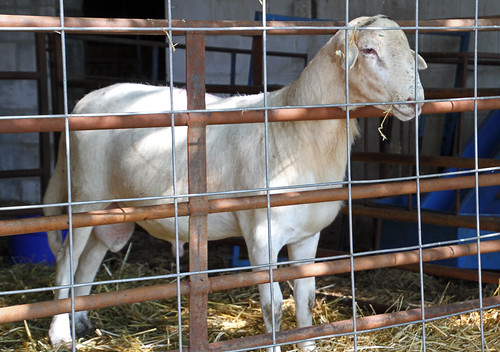As commercial ewes, Katahdin Mules are hard to beat. They can be selected to shed as well as the purebred Katahdins. They keep the hooves black, which may aid in hoof care. There is no compromise in reproductive capacity. They add some size to the flock, which is advantageous in certain production environments. I like to sell bigger lambs (> 100 pounds), so the added size is bonus for me.
 |
| Katahdin Mule ewes |
Next, I fused dairy genetics into my flock. My ideal Katahdin "dairy ewe" is 84% Katahdin x 16% Lacaune. The Lacaune is a dairy sheep from France. As compared to the East Friesian, the other common dairy breed (in the US), they are hardier, less woolly, and produce milk with a higher percentage of fat. The research center in Spooner, Wisconsin, had crossed the Lacaune with the Katahdin, in hopes of creating a dairy hair sheep. This is where my original genetics came from.
Milk, especially milk fat, grows lambs. I consider milk production to be one of the most important traits in my flock, especially since I prefer triplet litters and twins from yearlings. The particular ram I started with also added some size and growth to my Katahdins. The crossbred Lacaunes make nice market lambs.
 |
| Dairy cross ewe and lambs |
All of the crossbred rams have been sold and a significant portion of my flock now contains either blackface (Hampshire x Suffolk) or Lacaune (dairy genetics). In the foreseeable future, all matings will be with purebred Katahdin rams.
My next focus is going to be quantitative genetic improvement: EBVs (estimated breeding values). The ram I bought last year was my first ram with EBVs. Unfortunately, he was killed 8 days into the breeding season (by another ram). Another ram had to finish the breeding. Luckily, I was able to get two ewe lambs out of the dead ram (both crossbred).
At the 2015 KHSI Expo, I wanted to get another ram with EBVs, but the choices were limited. Instead I bought a ram with good on-farm production data. The ram is out of one of the top show flocks in the country. His triplet brother was the Reserve National Champion at Louisville (NAILE). His triplet sister won the January ewe lamb class. "Eddie" will be the sire of most of my 2016 lamb crop. I'm not interested in showing my sheep, but this ram had the traits I was looking for.
 |
| New ram Eddie |
I also bought a ewe out of the sale. She did have EBVs. In fact, she is out of the top-indexing Katahdin ewe in the country. In 2016, I plan to get a ram from the same flock. I want to finally enroll my flock in NSIP.
With regards to NSIP (EBVs), I believe in balanced selection. I don't want to over-emphasize any single trait. At the same time, I will emphasize traits that are important to my production system and goals of my breeding program: NLB (number of lambs born), NLW (number of lambs born), and MWWT (maternal weaning weight). The production indexes are also important to me, because they offer the best means for balanced selection.
No comments:
Post a Comment